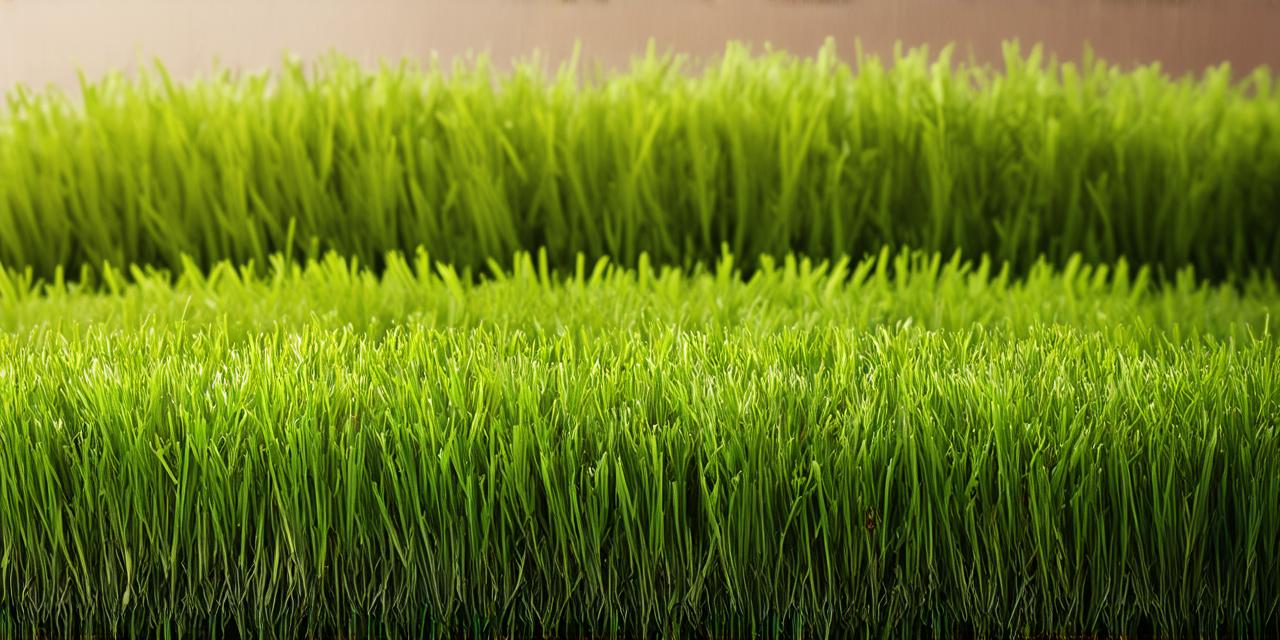
Introduction: The Importance of Realistic Grass in Unity Projects
Grass is an essential element in creating a realistic and immersive environment in Unity projects. It not only adds depth and texture to the scene but also serves as an important anchor point for other elements such as trees, rocks, and water bodies. However, creating 3D grass that looks realistic and performs well requires a lot of effort and attention to detail.

Creating 3D Grass Using Primitive Shapes
One of the simplest ways to create 3D grass in Unity is by using primitive shapes such as cubes, cylinders, or spheres. These shapes can be easily scaled and manipulated to create a variety of grass textures, including tall fescue, Bermuda grass, and ryegrass. Here’s how you can do it:
- Create a new scene in Unity and add a primitive shape to the scene, such as a cube or cylinder.
- Scale the primitive shape to the desired size for your grass. A good starting point is to create a cube with a height of 0.5 units and a width of 1 unit.
- Apply a texture to the primitive shape using Unity’s Material Inspector. Choose a grass texture that matches the look you want to achieve.
- Use Unity’s Animation tools to create a swaying animation for your grass. You can use keyframes to animate the rotation and scale of the primitive shape, creating a natural and realistic movement.
- Repeat steps 1-4 for as many primitives as you need to cover the ground in your scene. You may need to adjust the size and position of each primitive to achieve the desired look and feel.
Using Grass Textures and Materials
Creating a realistic grass effect requires using appropriate textures and materials for your grass blades and stems. Unity provides a variety of grass texture packs that you can use to create different types of grass, such as tall fescue, Bermuda grass, and ryegrass. Here’s how you can use these textures in your Unity project:
- Download the grass texture pack from the Unity Asset Store or create your own using a texture editor such as Photoshop or GIMP.
- Import the grass texture into your Unity project and apply it to a new material in Unity’s Material Inspector. You can use the “Grass” shader provided by Unity for this purpose.
- Adjust the properties of the material, such as the albedo, roughness, and metalness, to achieve the desired look and feel for your grass. You may also need to adjust the UV mapping of the texture to match the size and shape of your grass blades and stems.
- Apply the material to a new GameObject in your scene and position it as needed to create the desired grass effect. You may need to use multiple GameObjects with different materials to achieve a more realistic look.
Using Grass Plugins and Tools
Unity provides a variety of plugins and tools that can help you create 3D grass more efficiently and effectively. Here are some popular options:
- Grass Pro: A commercial plugin that provides advanced grass creation tools, including the ability to import your own grass textures and customize the look and feel of your grass blades and stems. It also includes a built-in animation system for creating natural and realistic movement.
- 3D Grass Maker: A free tool that allows you to create 3D grass by extruding a 2D image onto a 3D surface. You can customize the look and feel of your grass blades and stems using various parameters, such as width, height, and density.
- Houdini: A powerful 3D creation software that includes built-in tools for creating realistic grass effects. You can use Houdini to generate complex grass patterns and textures, as well as simulate natural movement and deformation.
Conclusion: The Power of Realistic Grass in Unity Projects
Creating 3D grass that looks realistic and performs well requires a combination of techniques, tools, and knowledge. By using primitive shapes, textures and materials, as well as plugins and tools, you can create a variety of grass effects that add depth and texture to your Unity projects. Whether you’re a beginner or an experienced developer, this guide has provided you with the essential knowledge and skills needed to create 3D grass that will take your projects to the next level.
FAQs
1. What is the best way to create 3D grass in Unity?
There are several ways to create 3D grass in Unity, including using primitive shapes, textures and materials, and plugins and tools. The best approach depends on your level of experience and the requirements of your project.
1. How do I create a realistic grass effect in Unity?
Creating a realistic grass effect requires using appropriate textures and materials for your grass blades and stems, as well as adjusting the properties of the material to achieve the desired look and feel. You may also need to use multiple GameObjects with different materials to achieve a more realistic look.
1. What are some popular tools and plugins for creating 3D grass in Unity?
Some popular tools and plugins for creating 3D grass in Unity include Grass Pro, 3D Grass Maker, and Houdini.
1. How do I animate my 3D grass in Unity?
You can animate your 3D grass in Unity by using keyframes to adjust the rotation and scale of the primitive shape, creating a natural and realistic movement. You may also need to use plugins and tools that include built-in animation systems for more advanced movements.

